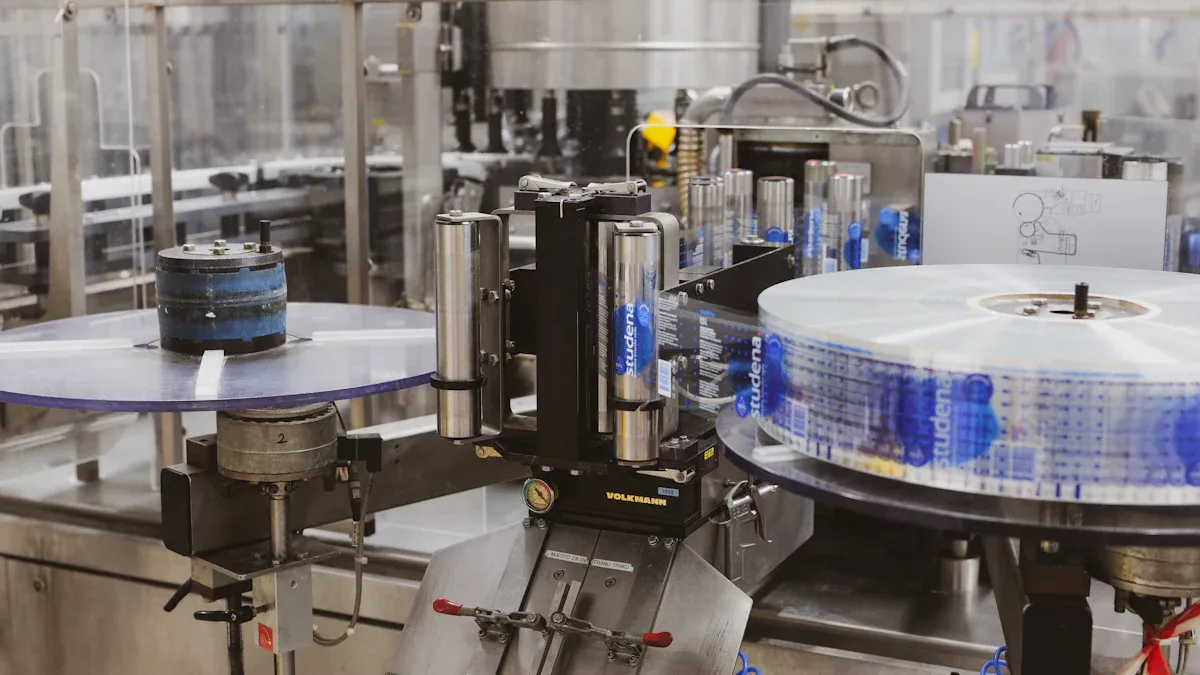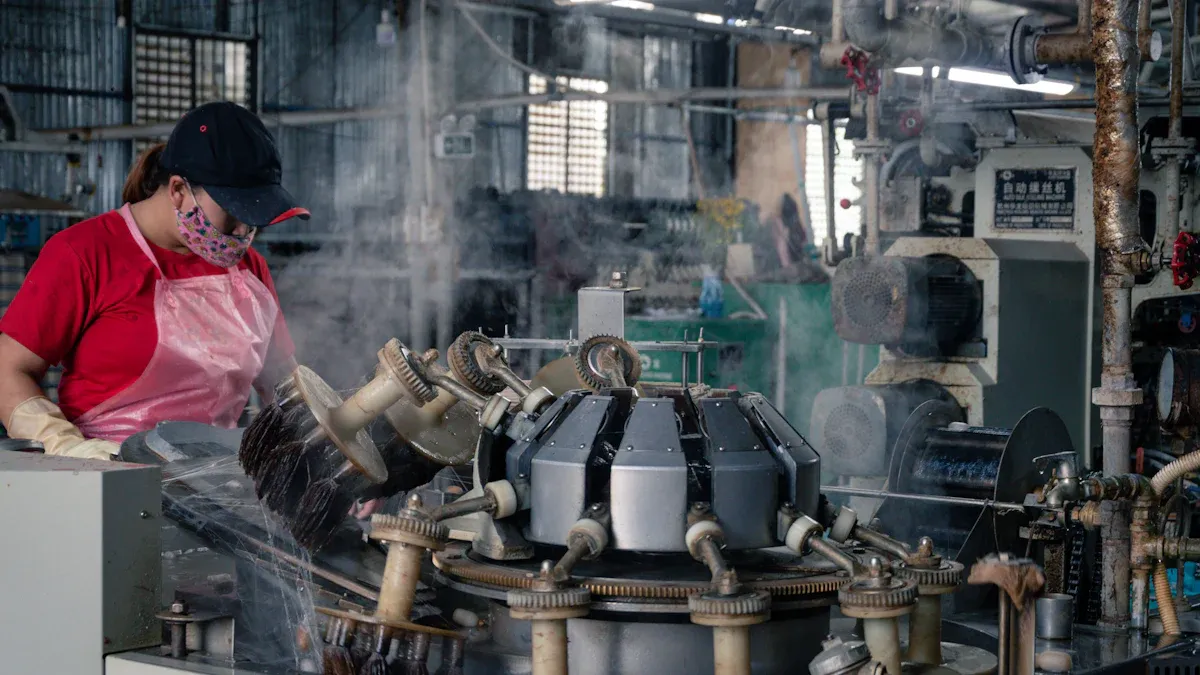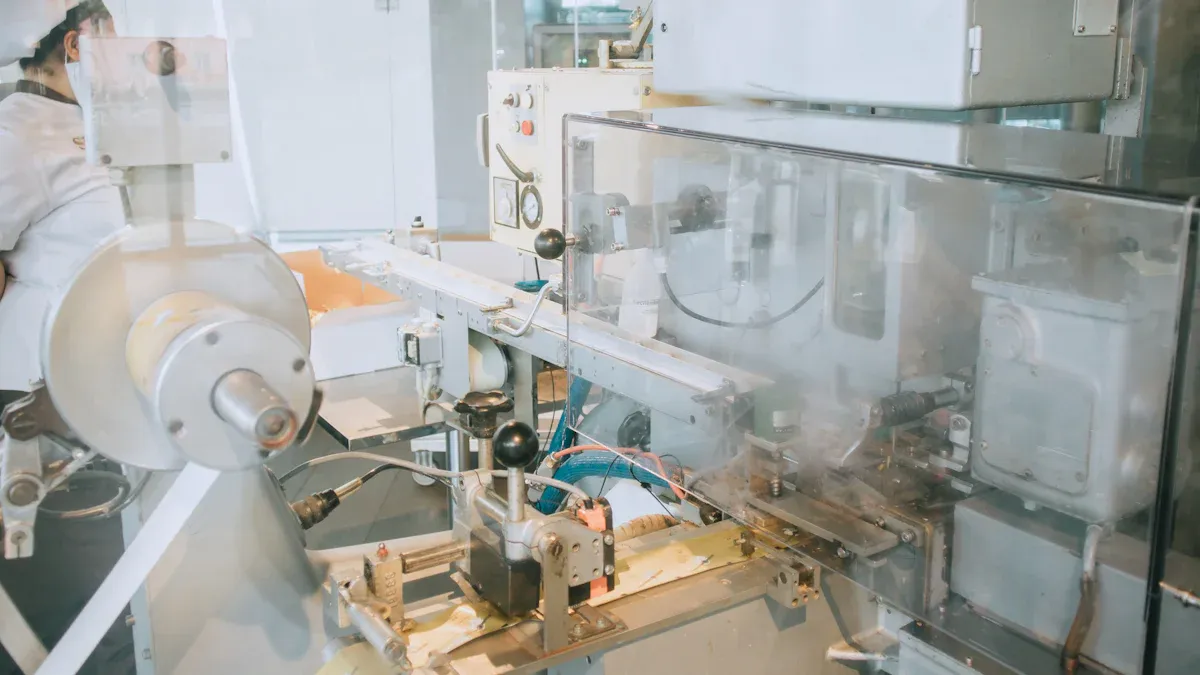
Reducing costs in injection molding is essential for staying competitive in manufacturing. You face challenges like maintaining product quality while managing expenses. Simplifying part designs and selecting materials wisely can significantly lower costs. Recycling scrap materials and optimizing processes also help minimize waste. Innovations such as smart molds and automation improve efficiency, offering long-term savings. By applying these strategies, you can strike a balance between quality and affordability.

Simplifying mold designs is one of the most effective ways to lower costs in injection molding. Complex designs often require advanced tools and machinery, which increase tooling costs and production time. By sticking to straightforward designs, you can reduce manufacturing complexities and save money. For example, avoiding undercuts and small details in your design can significantly lower tooling costs. Smaller parts also take less time to produce, which reduces material costs and speeds up the injection molding cycle.
Tip: Reducing wall thickness in your parts minimizes material usage and shortens production cycles. This approach not only lowers costs but also improves efficiency.
A case study in the electronics industry demonstrated that using advanced mold technology to simplify designs reduced production cycle times by 25%. Similarly, in aerospace, lightweight components with simplified designs led to a 15% reduction in fuel consumption. These examples highlight how streamlined designs can lead to a cost-effective process while maintaining quality.
| Design Approach | Impact on Costs |
|---|---|
| Avoiding complex mechanisms | Reduces tooling costs by 15%-30% |
| Reducing wall thickness | Speeds up cycles and lowers material costs |
| Skipping high-grade finishes | Saves money on unnecessary refinements |
Choosing durable materials for your molds ensures long-term savings. While high-quality materials may have a higher upfront cost, they last longer and reduce the need for frequent replacements. Durable molds can withstand high-volume production runs without compromising quality, making them a cost-effective choice for manufacturers.
For instance, using hardened steel for molds can handle thousands of cycles without wear and tear. This durability minimizes downtime and maintenance costs, ensuring a smoother production process. Additionally, durable materials reduce the risk of defects, which lowers scrap rates and saves money in the long run.
Note: Investing in durable materials upfront may seem expensive, but it pays off by reducing repair and replacement costs over time.
Multi-cavity molds are a game-changer for high-volume production runs. These molds allow you to produce multiple parts in a single cycle, significantly reducing production time and costs. For example, fitting multiple parts into one mold can cut production time by roughly 80%, making it an ideal solution for manufacturers aiming to lower costs.
Family molds, a type of multi-cavity mold, are particularly useful when producing different parts of the same product. They streamline the process and ensure consistency across all components. By incorporating multi-cavity molds, you can achieve a cost-effective process without sacrificing quality.
Example: In the medical device industry, precision molds with multiple cavities ensured consistent production quality while reducing defects. This approach not only improved efficiency but also lowered material costs.
Selecting the right resin is crucial for balancing cost and quality in injection molding. Resins vary in price and performance, so you need to choose one that meets your production requirements without inflating costs. For example, polyethylene and polycarbonate are popular options because they offer affordability and durability. Polyethylene works well for less demanding applications, while polycarbonate provides higher performance for more complex needs.
When evaluating resins, consider their melt flow rate and how it aligns with your molding process. Keep in mind that testing conditions, such as temperature and load, can affect the results. By understanding these factors, you can make informed decisions that optimize material costs and maintain product quality.
Tip: High-performance materials may have a higher upfront cost, but they often lead to long-term savings by reducing defects and improving efficiency.
Recycling and reusing materials can significantly lower costs in your molding process. Instead of discarding scrap materials, you can regrind and blend them with virgin resins to create new parts. This approach not only reduces waste but also cuts down on material costs.
Many manufacturers have adopted this strategy to improve sustainability and save money. For instance, using recycled plastics in non-critical components can help you control costs without compromising quality. However, you should monitor the quality of recycled materials to ensure they meet your production standards.
Note: Implementing a recycling program requires an initial investment, but it pays off by reducing material expenses over time.
Negotiating bulk discounts with suppliers is another effective way to reduce material costs. Purchasing materials in larger quantities often leads to lower prices per unit, helping you save money in the long run. Suppliers are usually willing to offer discounts for bulk orders, especially if you establish a long-term partnership with them.
To maximize your savings, compare quotes from multiple suppliers and leverage competitive pricing. You can also discuss flexible payment terms or volume-based discounts to further reduce costs. Building strong relationships with your suppliers ensures a steady supply of materials at a reasonable cost.
Example: In 2022, 65% of top manufacturers reported an increase in resin prices. However, those who negotiated bulk discounts managed to stabilize their material costs, demonstrating the importance of supplier collaboration.
Reducing cycle times is a key step in lowering production costs. You can achieve this by optimizing your processes to eliminate inefficiencies. Start by analyzing your workflow to identify bottlenecks. Streamline these areas to improve throughput. For example, using predictive analytics helps you anticipate potential delays and adjust your operations accordingly. Real-time monitoring also provides immediate feedback, allowing you to make quick adjustments and maintain efficiency.
Lean manufacturing principles emphasize reducing idle time and unnecessary movements. Effective material planning ensures resources are available when needed, minimizing delays. Automation can further speed up processes by replacing manual tasks. By focusing on these strategies, you can reduce cycle times and enhance overall productivity.
Regular maintenance of your equipment is essential for avoiding costly downtime. When machines break down unexpectedly, production halts, increasing costs and delaying delivery schedules. To prevent this, establish a routine maintenance schedule. Inspect your molds and machinery frequently to identify wear and tear before it becomes a problem.
Predictive maintenance tools can also help you monitor equipment health. These tools use data to predict when a machine might fail, allowing you to address issues proactively. Keeping your equipment in top condition ensures consistent production and reduces the risk of defects. This approach not only lowers costs but also improves the quality of your molded products.
Automation is a powerful way to reduce labor costs in injection molding. By automating repetitive tasks, you can free up your workforce for more complex and value-added activities. Robots and automated systems can handle tasks like material handling, part inspection, and packaging with precision and speed.
Investing in automation may seem expensive initially, but it pays off in the long run. Automated systems work faster than humans and operate continuously without breaks. This increases production efficiency and reduces errors. Additionally, automation minimizes the need for extensive training, further lowering costs. By incorporating automation into your processes, you can achieve significant savings while maintaining high-quality standards.
Quality control plays a vital role in reducing waste and scrap in molding operations. By implementing advanced measures, you can prevent defects before they occur. Technologies like in-cavity sensors and statistical process control (SPC) provide real-time data, allowing you to make adjustments during production. This proactive approach minimizes scrap rates and ensures consistent product quality.
To quantify waste reduction, monitor key metrics such as scrap rate, machine downtime, and production efficiency rate. A scrap rate below 2% is a recommended target. For example, if you produce 100 units and 5 are scrapped, the scrap rate equals 5%. Regularly calibrating machinery and maintaining equipment also prevents defects caused by wear and tear. These steps not only improve quality but also lower production costs.
Tip: Train your staff to follow quality standards and operate machines correctly. This reduces errors and enhances efficiency.
Simulation software is a powerful tool for testing designs before production begins. It allows you to identify potential issues, such as material flow problems or weak points in the mould, without wasting resources. By addressing these issues early, you can avoid costly errors during the injection molding process.
For example, simulation tools can predict how materials will behave under specific conditions. This helps you optimize designs for durability and efficiency. Using these insights, you can reduce tooling costs and minimize scrap. Simulation software also shortens the design cycle, enabling faster production while maintaining high standards.
Your team plays a crucial role in minimizing waste. Training staff to recognize waste sources empowers them to take corrective actions. For instance, employees can monitor scrap data to identify patterns and root causes of defects. This analysis helps you implement targeted solutions to reduce waste.
Encourage your team to adopt best practices, such as proper material handling and efficient machine operation. Regular workshops and hands-on training sessions ensure that everyone stays updated on the latest techniques. A well-trained workforce not only reduces waste but also improves overall production efficiency.
Note: Investing in employee training may seem like an added cost, but it leads to significant savings by reducing scrap and improving productivity.

Energy-efficient machinery can significantly reduce injection molding costs. Modern machines consume less power while maintaining high performance. By upgrading to energy-efficient equipment, you can lower electricity bills and reduce the environmental impact of your operations. For example, servo-driven hydraulic systems use energy only when needed, unlike traditional systems that run continuously. This efficiency translates to lower production costs and a more sustainable process.
Tip: Look for machines with energy ratings or certifications to ensure they meet efficiency standards. These investments often pay off quickly through reduced operational expenses.
Data analytics helps you optimize the cost of your injection molding process. By analyzing production data, you can identify inefficiencies and areas for improvement. For instance, tracking cycle times and material usage can reveal bottlenecks or waste sources. Addressing these issues improves productivity and reduces costs.
Real-time monitoring tools provide actionable insights. They allow you to adjust parameters like temperature or pressure during production. This ensures consistent quality and minimizes defects. Using data analytics also helps you predict maintenance needs, reducing downtime and mold manufacturing cost.
Example: A company mass-producing precision plastic parts used data analytics to cut its price-per-piece cost by 15%. This approach improved efficiency and reduced waste.
Additive manufacturing, or 3D printing, is a cost-effective way to prototype optimized plastic parts. Traditional prototyping methods can be expensive and time-consuming. With 3D printing, you can create detailed prototypes quickly and at a lower cost. This allows you to test designs before committing to full-scale production.
Using additive manufacturing also reduces the need for expensive molds during the design phase. You can refine your designs and ensure they meet specifications before investing in moulding tools. This approach saves time and money while improving the quality of manufactured parts.
Note: Additive manufacturing is ideal for small batches or custom designs. It complements injection molding by streamlining the prototyping process.
Reducing injection molding costs requires a strategic approach. By optimizing mold design, selecting cost-effective materials, enhancing production efficiency, reducing waste, and leveraging technology, you can achieve significant savings. These cost reduction efforts not only lower expenses but also improve quality and efficiency. For example, manufacturers using KERN IoP systems have reported scrap rate reductions of up to 35% and energy savings of 7% to 25%. Such improvements lead to long-term benefits and a return on investment within two years.
Take time to assess your processes and identify areas for improvement. Small changes, like simplifying designs or automating tasks, can make a big difference. By applying these strategies, you can create a more cost-effective and efficient molding process while maintaining high standards.
Recycling scrap materials and negotiating bulk discounts with suppliers are effective strategies. Regrinding and blending scrap with virgin resins can lower expenses. Bulk purchasing ensures lower prices per unit, saving money over time.
Automation replaces repetitive tasks with machines, increasing efficiency and reducing errors. Robots handle material handling, inspection, and packaging faster than humans. This minimizes training needs and frees your workforce for complex activities.
Multi-cavity molds save time and money by producing multiple parts in one cycle. They improve efficiency in high-volume production runs. Family molds, a type of multi-cavity mold, streamline processes for products with multiple components.
Simulation software tests designs before production begins. It identifies issues like material flow problems or weak points in molds. Fixing these early prevents defects, reduces scrap, and lowers tooling costs.
Energy-efficient machinery reduces electricity bills and environmental impact. Modern machines, like servo-driven hydraulic systems, consume less power while maintaining performance. These investments pay off quickly through operational savings.